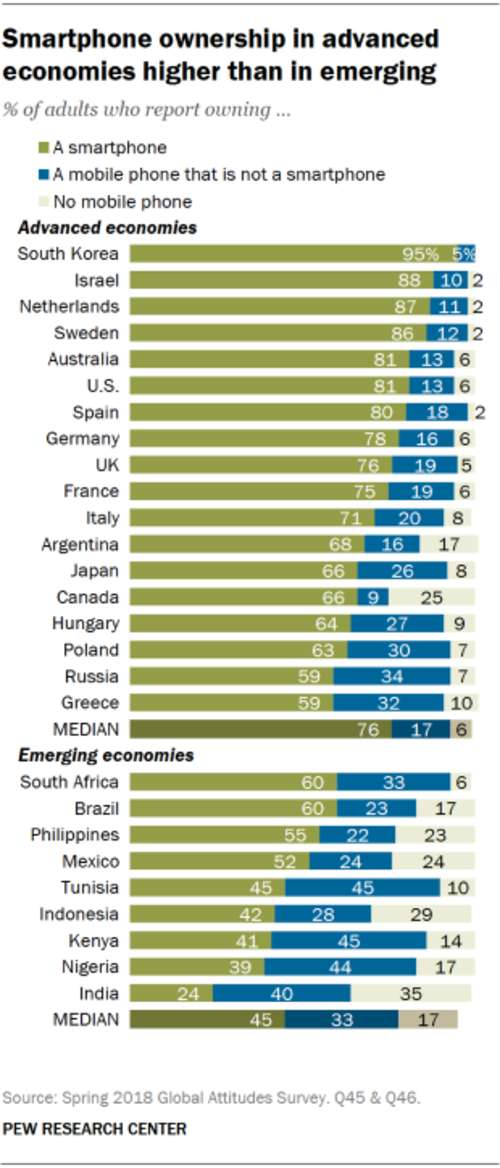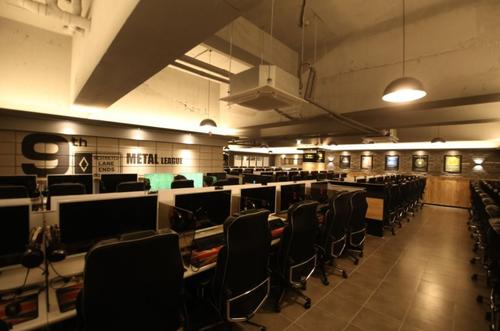Background
Other than desktops and laptops, smartphones are one of the most common ways to access the internet. In 2011, the share of Americans that owned a smartphone was about 35%. In just 8 years this number has grown to 81% [1]. Canada, at the moment, lags behind at around 70-75%, but both are eclipsed by South Korea, where over 90% of people own a smartphone [2]. However, these statistics take into account the entire populations of their respective countries. When you break the smartphone owning population of each country down into different demographics, you find that over 95% of teenagers and college-aged adults own a smartphone. Teens and young adults today have access to an almost limitless amount of apps, media and information. This, in some ways, is a good thing. Families all over the world can talk as if they were right next to each other and the right answer to most questions is usually only a few keyboard clicks away.
However, as the old saying goes: “Too much of a good thing.”

Physical sources of addiction like drugs and alcohol have pragmatic obstacles to their use, unlike the internet. The internet is virtually limitless, and increasingly, some groups are starting to recognize it as a potential addiction.
A glimpse into our future
As the rate of smartphone ownership might have shown, South Korea has a very tech-integrated society. Which unfortunately means that it’s a prime place to study the developing disease of internet addiction.
There are businesses in South Korea called PC bangs, which are internet cafes centered on PC gaming. But unlike internet cafes in the west, these PC bangs are larger, have modern equipment, and are fairly cheap. Many are open 24/7 and if you have the time and don’t cause a disturbance, then there’s nothing stopping you from spending hours or even days in front of one of their screens. For instance, Lee Kae Seong, the owner of a PC bang, says:
“I've seen a lot of customers come here late in the afternoon and leave the next morning. That's pretty common, [3]”

Even more common is people staying at home and using their own desktops to the detriment of their offline life. South Korea, recognizing a burgeoning problem, has set up government funded offices and camps with the hope of getting some of their youth back on the right track. Youth like a 14-year-old South Korean girl, whose quotes sound like they come from the hallways of a rehab clinic.
“My hands get shaky, I can't concentrate. When I go back to the dormitory to get some rest, I keep thinking of Facebook. There are hearts there I can collect from a game, but they'll go away if I don't take them in three days. That worries me."
This same 14-year-old also recounts how, after her mother would turn off their Internet at 10 p.m. for bed, she would wait for her to fall asleep, turn the Internet back on, and then play video games until it was time for her to go to school.
Symptoms
As has already been alluded to, Internet addiction and traditional substance abuse share a large amount of similarities. So too, are the symptoms uncomfortably close. These include [4]:
- Anxiety
- Depression
- Dishonesty
- Euphoric feelings when in front of the computer
- Unable to keep schedules
- No sense of time
- Isolation
- Backache
- Headaches
- Weight gain or loss
- Disturbances in sleep
- Carpal tunnel syndrome
- Blurred or strained vision
A storm is coming
South Korea is not the only political body worried about internet addiction. Earlier this year, the World Health Organization (WHO) added Gaming disorder to their revised list of International Statistical Classification of Diseases and Related Health Problems, just after gambling addiction. Treatment facilities have sprung up all over the U.S. aimed at tackling this emerging problem.
However, the resources put towards this affliction pale in comparison to the resources available to those suffering from traditional addictions. Which is understandable, for the amount of people actually diagnosed with addiction to the internet in the US is minuscule, and the number of people diagnosed in Canada is even smaller.
However, a 2018 South Korean government survey said that 20% of their country's population was at serious risk of internet addiction. It took less than a decade for the US and Canada to jump from 35% and 40% smartphone ownership to 81% and 75%, respectively. One has to wonder, how long until 20% of our population is at risk of internet addiction?
References
[1] Demographics of Mobile Device Ownership and Adoption in the United States. (2019, June 12). Retrieved from https://www.pewinternet.org/fact-sheet/mobile/.
[2] Herald. (2018, June 24). Korea No. 1 worldwide in smartphone ownership, internet penetration. Retrieved from http://www.koreaherald.com/view.php?ud=20180624000197.
[3] Sullivan, M. (2019, August 13). Hooked On The Internet, South Korean Teens Go Into Digital Detox. Retrieved from https://www.npr.org/2019/08/13/748299817/hooked-on-the-internet-south-korean-teens-go-into-digital-detox.
[4] Internet Addiction Disorder - Signs, Symptoms, and Treatments. (0AD). Retrieved from https://www.psycom.net/iadcriteria.html.












